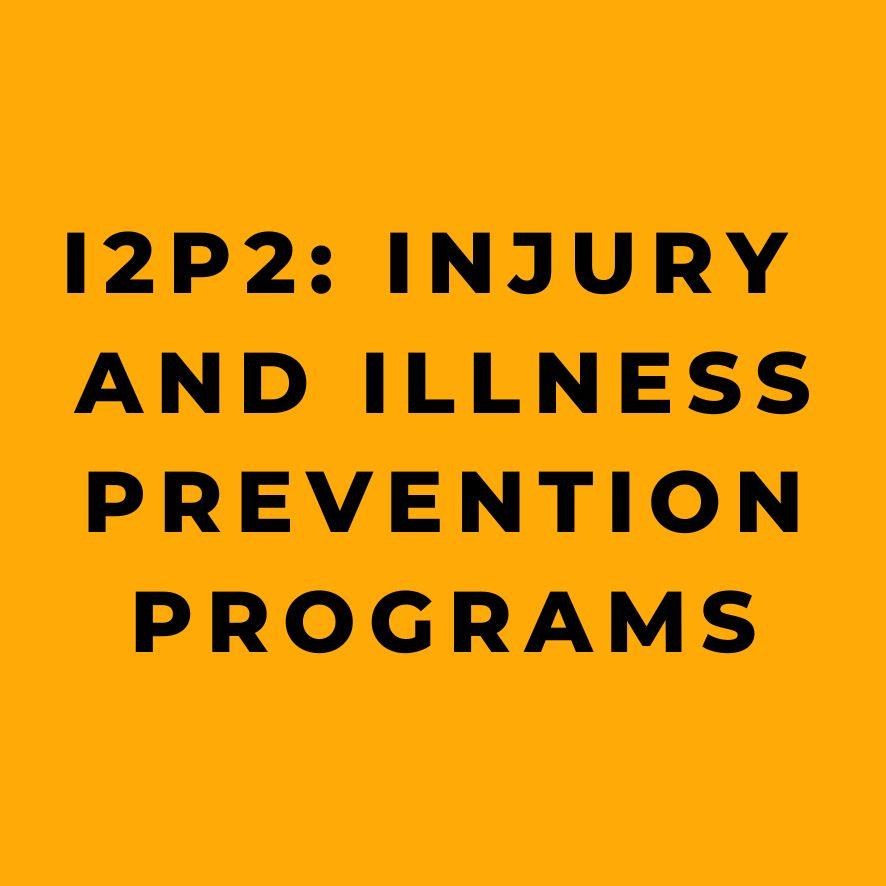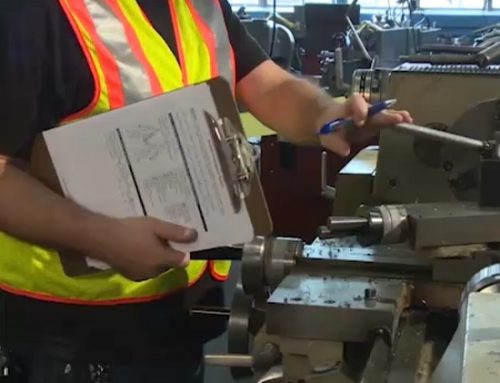This article is extracted from the online training course “I2P2: Injury and Illness Prevention Programs.” It provides an overview of how implementing an effective Injury and Illness Prevention Program (I2P2) can help strengthen a company’s safety culture and reduce workplace accidents and injuries.
Every day in the United States, 12 workers die from work-related incidents and more than 10,000 suffer disabling injuries on the job. Most of these incidents could be prevented through more organized prevention efforts. An Injury and Illness Prevention Program provides employers and employees with a systematic framework to proactively identify and mitigate workplace hazards before they cause harm.
Also known as Accident Prevention Programs, Safety and Health Management Systems, or Loss Control Programs, I2P2s make workplaces safer and deliver tangible benefits for both employers and staff. When implemented properly, I2P2s can significantly decrease the number and severity of workplace accidents and injuries. This not only avoids substantial costs associated with incidents, but can also boost productivity, quality, morale, and job satisfaction.
Is implementing an I2P2 a feasible and worthwhile investment for an organization? The answer is a resounding yes. I2P2s incorporate proven best practices that can enhance workplace safety in companies of any size or industry. The principles of systematic hazard identification, risk mitigation, safety training, and continuous improvement apply universally. Investing in workplace safety is simply good business.
Creating an Effective I2P2
Workplace safety must be everyone’s responsibility. For an I2P2 to succeed, it requires buy-in and participation from management, supervisors, and staff.
Management initiates the process by creating I2P2 policies and a written mission statement emphasizing their commitment to safety. The program framework lays out clear goals, assigns roles and responsibilities, allocates sufficient resources, and sets up policies protecting workers who report concerns from retaliation.
While leadership sets the direction, employees at all levels must be involved in shaping and carrying out the program. Staff insights about hazards and suggestions for improvements are invaluable, since they have direct on-the-job experience. Establishing open communication and encouraging participation fosters shared ownership over creating a culture of safety.
The core elements that every effective I2P2 contains include:
Hazard Identification and Assessment
The first step is systematically identifying and analyzing hazards in the workplace to understand risks and devise solutions. Initial hazard assessments inspect the work environment and equipment, review company safety records, and interview employees about safety concerns or past incidents. Assessing real accident causes, not just the superficial reasons, reveals opportunities for improvement.
Since conditions constantly evolve, hazard identification must be ongoing. Anytime processes, equipment, layouts, or staffing change, new hazards may appear. Employees should be trained to remain vigilant and report emerging risks. Periodic inspections, updating procedures, and continuous communication help sustain focus on safety.
Prevention and Control
Once hazards are identified, the next priority is mitigating them. Solutions should be implemented in a timely manner, based on the severity of risks. Controls follow a hierarchy:
- Engineering controls remove dangers through equipment or process redesign. For example, installing machine guards or ventilation systems.
- Administrative controls minimize exposure to hazards through safer work policies and other procedural changes. For example, job rotation to limit repetitive motions or access restrictions.
- Personal protective equipment (PPE) serves as the last line of defense when hazards cannot be engineered out. For example, wearing gloves, goggles, or hard hats.
Fixing every hazard at once may not be feasible. Interim protective measures can be used for lower priority risks until more complete solutions are developed.
Safety Training
Education ensures everyone understands workplace risks and how to fulfill their safety responsibilities. Training covers hazard identification, safe work practices, PPE usage, reporting procedures, and emergency response. Approach, frequency, and depth of training varies by role.
Orientation trains new hires. Job-specific instruction equips employees to complete duties safely. Managers receive training on technical aspects and their responsibilities to lead I2P2 activities. Refresher training helps sustain proficiency and awareness.
Continuous Improvement
An effective I2P2 incorporates continuous review and upgrading. Begin by evaluating if the program meets targets and is implemented properly. If goals are unmet, determine whether the program design needs improvement or if execution is lacking.
Solicit insights from all staff to accurately assess what’s working and what’s not. This helps set new objectives and make enhancements to strengthen policies, procedures, training, or hazard controls. Regular self-audits allow the I2P2 to evolve and expand in scope over time.
Benefits of Effective I2P2 Programs
When embraced throughout an organization, I2P2s can profoundly improve workplace safety records. Fewer accidents lead to decreased costs, reduced missed workdays, higher morale, and increased efficiency.
Some specific benefits include:
- Avoiding over $400 million in national daily costs associated with workplace injuries and illnesses. These expenses impact workers’ compensation premiums, medical expenditures, legal fees, and lost productivity.
- Experiencing fewer work disruptions and overtime costs due to injured employees missing work. Keeping trained staff healthier improves continuity.
- Boosting morale and job satisfaction when employees feel their well-being is valued. Safety-conscious cultures enjoy higher retention.
- Increasing efficiency, output quality, and customer service by reducing workplace accidents that cause delays or defects.
- Earning recognition and lower insurance rates for excellence in safety programs. Safer employers attract top talent and business partners.
While names may vary, every effective safety initiative incorporates key I2P2 principles: management commitment, employee involvement, hazard analysis, risk mitigation, training, and continuous improvement. Integrating these insights can help build a workplace culture that champions safety, guards employee well-being, and supports overall business success. When it comes to workplace safety, an ounce of prevention is truly worth a pound of cure.
As we wrap up this comprehensive look into the vital importance of an Injury and Illness Prevention Program (I2P2), we find a resounding affirmation that workplace safety is not a mere option—it’s a necessity. We’ve explored how effective I2P2s can drastically decrease workplace incidents, thereby saving not only lives but also the valuable resources of time and money. Through a collaborative effort involving both management and staff, companies can construct a proactive, ever-evolving safety program that promises extensive benefits, from reduced injury-related costs to elevated workplace morale and efficiency. But the key question that often follows understanding the “why” is the “how.” How do you implement an effective I2P2 program that ensures the safety of your employees while also contributing to your company’s bottom line? That’s where our full-length interactive I2P2 courses come into play.
Transform Your Workplace Safety: Act Before Accidents Happen!
Don’t Be a Statistic—Be the Change!
Every day, 12 workers face the unthinkable—losing their lives on the job. Another 10,000 come home with injuries that could affect them for life. Imagine the grief, the wasted potential, and the financial toll. But what if we told you it doesn’t have to be this way?
The Solution is I2P2
Are you ready to take your company’s safety culture from fragile to unbreakable? When you decide to step up, Our full-length interactive I2P2 courses are your master key. Approved by OSHA, our program is designed to empower both employers and employees to forge a safer workplace.
What Sets Our Full-Length Courses Apart?
- Comprehensive Training: From understanding what I2P2 is to hazard identification and prevention, the courses cover it all. No room for gaps, no room for error.
- Employee Participation: This isn’t just a top-down approach. Our courses harness the collective intelligence of your entire workforce, making the safety program more robust.
- Bilingual Availability: English or Spanish, pick what suits your diverse workforce.
- Continuous Improvement: Safety is a never-ending journey. Our courses offer tools for ongoing program evaluation and continuous improvement.
Act Now—Your Safety Can’t Wait!
Limited slots are available for our in-depth, interactive courses. Thousands have already transformed their workplace into a fortress of safety. Will you join them?
Enroll Today and Elevate Your Safety Game!




